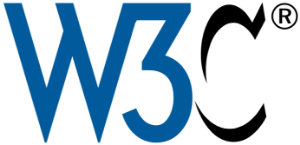Defining an Open Web Platform and Cross-Compatibility as a Global Design
January 5, 2019 – Marjorie Furay, CEO ![]() TechOps Consulting
TechOps Consulting
I work with clients and companies that are geared towards becoming more online-based for either their brick & mortar or virtual business. In doing so, I must be clear on what they can or cannot do with their company online and the standards behind these limitations, but I also must explain what steps we need to take to begin and complete an online environment for their company. This is where W3C standards come in.
Now 25yrs ago, when I first started my business in web designing and graphics, it was a literal free-for-all online. There were no regulations, per se, but simply hoping everyone would be honorable enough to not steal your artwork, creativity, and content. Keeping the moral high-ground was important for the internet to grow; yet, there were still standards that needed to be followed and understood within the coding, design, and technology platform. In 2012, W3C came together as five organizations agreeing to a set of Principles on the web for everyone to use and enjoy.
First, there are design principles such as social values in communication, accessibility, commerce, and shared knowledge. This includes having web access on everything digital such as mobile devices, televisions, kiosks, and appliances. W3C encourages trust, interaction, invention, and participation on a global scale.
The most important aspect of W3C is the web standards creating cross-platform compatible websites on all browsers, mobile devices, and televisions with Smart technology. In defining this Open Web Platform, they cover the code used in web design and applications like HTML, CSS, Java, PHP, SVG, and PNG. There are principles in the technologies that build the web such as DNS, HTTP, URI, and XML. It includes documents and data using PDF, DOC, CSV, SPARQL, MySQL, and OWL.
W3C intends to keep the web universal and open whether wired or wireless, whatever authoring tools are used, or the technology we use. Keeping it global and free continues to drive creativity and blending of the minds. W3C is keeping design, business, and community on the web standardized through consistent specifications and regulations as it grows into a communication hub for everyone globally.
Marjorie
Reference: W3C. (2017). Standards. Retrieved from https://www.w3.org/standards/

